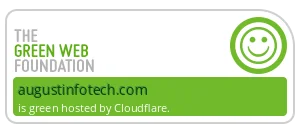Introduction
In today’s statistical-driven world, acquiring data from websites has become a crucial responsibility for many developers and data scientists. Having adequate online scraping tools is essential, whether acquiring information for market research, competitive analysis, or creating a machine learning dataset. Using its robust library ecosystem, Python offers two popular Python web scraping tools: Python Requests, BeautifulSoup and Scrapy. We will contrast these two in this blog article to help you select the best library for your web scraping requirements. Refer to the ultimate manual for excelling in web scraping using python.
BeautifulSoup
The package for Python called BeautifulSoup is used to gather data from XML and HTML-based documents. It is perfect for handling small to medium-sized scraping tasks since it offers an easy-to-use interface for navigating, searching, and modifying the parse tree. Here are some of BeautifulSoup’s main characteristics:
Convenient to navigate around: Because of its simple syntax, BeautifulSoup can be used by anyone with different degrees of programming experience. You can learn how to utilize the BeautifulSoup tutorial for web scraping very quickly, regardless of your experience level.
Adaptable parsing: With BeautifulSoup, you can parse and extract information from incorrect HTML and manage poorly organized pages gracefully. Because of its adaptability, it’s a powerful tool for data extraction with Python from various websites.
Blending with various libraries: BeautifulSoup can be combined with other Python tools, such as requests to retrieve web pages and pandas to manipulate data. This compatibility facilitates the development of extensive pipelines for data extraction and processing.
Outstanding for quick prototyping: BeautifulSoup’s simplicity can be a big benefit if you need to scrape a website or prototype quickly. Without having to deal with intricate setups, you can quickly set up a scraping script and begin collecting data.
Example code:
This is a basic illustration of how to use BeautifulSoup to extract data from a webpage:
python
import requests
from bs4 import BeautifulSoup
# Fetch the web page
response = requests.get('http://example.com')
# Parse the web page content
soup = BeautifulSoup(response.text, 'html.parser')
# Extract data
titles = soup.find_all('h2')
for title in titles:
print(title.get_text())
After retrieving a webpage, this script parses its HTML content and removes all of the text included in <h2> elements.
Scrapy
Scrapy offers a more complete web crawling with Scrapy and a scraping platform for larger projects. It provides a complete toolkit for efficiently developing and expanding web scrapers. Here are some of its most notable characteristics:
The ability to scale: Scrapy is intended for large-scale scraping jobs. Organizing the process of scraping and processing web pages can simplify handling intricate scraping tasks. Significant-scale data extraction projects are supported by its architecture, where it is essential to manage numerous pages and extract significant amounts of data quickly.
Requests that are asynchronous: Scrapy’s asynchronous design is a game-changer, allowing it to send several requests at once. This feature turbocharges the scraping process, particularly when dealing with large numbers of pages or domains. For data scientists working with real-time data or handling large amounts of requests, this speed and efficiency is a source of excitement.
Built-in middleware: Scrapy’s strong middleware infrastructure is not just a feature, it’s a gateway to a world of flexibility and control over the scraping process. This framework allows you to manage cookies, handle redirects, and retry unsuccessful queries, among other scenarios. For web scraping enthusiasts, this level of control is sure to pique your interest and inspire new scraping strategies.
Pipelines for items: Scrapy provides item pipelines to process the data that has been scraped before it is saved. Pipelines help clean, validate, and store data in several formats, including databases, CSV, and JSON. This feature guarantees that the information you gather is correct and prepared for additional study or archiving. Duplicate item removal, data type conversion, and database integration are just a few of the functions that item pipelines can accomplish. This is an illustration of how to create and utilize an item pipeline in Scrapy:
Example pipeline:
python
class CleanDataPipeline:
def process_item(self, item, spider):
item['price'] = float(item['price'].replace('$', ''))
return item
class SaveToDatabasePipeline:
def open_spider(self, spider):
self.connection = sqlite3.connect('items.db')
self.cursor = self.connection.cursor()
self.cursor.execute('CREATE TABLE IF NOT EXISTS items (name TEXT, price REAL)')
def close_spider(self, spider):
self.connection.commit()
self.connection.close()
def process_item(self, item, spider):
self.cursor.execute('INSERT INTO items (name, price) VALUES (?, ?)', (item['name'], item['price']))
return item
# In your settings.py
ITEM_PIPELINES = {
'myproject.pipelines.CleanDataPipeline': 300,
'myproject.pipelines.SaveToDatabasePipeline': 800,
}
In this example, the SaveToDatabasePipeline saves the cleaned data in a SQLite database, and the CleanDataPipeline removes dollar signs from the price column and converts it to a float. You can specify the sequence in which the pipelines are processed in the settings.py file, where they are setup.
Selecting appropriately:
Several variables, such as the scope and intricacy of your project, your level of tool experience, and your performance needs, influence the decision between BeautifulSoup vs. Scrapy. Here are some crucial things to remember:
Project size and level of intricacy: BeautifulSoup can work well enough for small-scale, one-time scraping activities or projects with simple requirements. It is the best option for short jobs and basic scraping requirements because of its simplicity and convenience. When gathering information from a single webpage or a limited number of pages with comparatively straightforward architecture, BeautifulSoup is especially helpful. The library’s usefulness for simple scraping tasks is increased by its capacity to handle HTML that has been corrupted and by its integration with other Python tools, such as pandas and requests.
For larger projects requiring scalability and complex scraping logic, however, Scrapy is a better choice. It is a good fit for intricate and substantial data extraction with Python tasks because of its robust design and wide range of features. Scrapy is perfect for scraping full websites or handling numerous domains because of its capacity to handle multiple pages and efficiently manage enormous volumes of data. Its asynchronous request processing guarantees speedy and effective data retrieval, reducing downtime and improving performance.
With configurable middleware, sophisticated data pipelines, and connectivity with databases and cloud storage, Scrapy also facilitates complex processes. This increases its usefulness as a tool for tasks requiring the systematic processing and storing big datasets. Furthermore, Scrapy is resilient to typical web scraping difficulties thanks to its built-in systems for managing cookies, sessions, and retries.
Acquiring curve: Because of its mild acquiring curve, BeautifulSoup is suitable for novices and people unfamiliar with web scraping. Users can start scraping tasks fast thanks to its simple syntax and functionalities, which are easy to grasp. The abundance of tutorials, documentation, and community resources available for BeautifulSoup facilitates learning even more.
On the other hand, because of its broad feature set and more intricate framework, Scrapy has a higher learning curve. Python programming, understanding web scraping concepts, and familiarity with Scrapy’s unique architecture and parts—such as spiders, pipelines, and middlewares—are all necessary for comprehension. Even though Scrapy has a vibrant community and extensive documentation, new users might need more time to properly understand its features and processes.
Achievement: Regarding speed and efficiency, Scrapy works better than BeautifulSoup, especially when handling large-scale scraping tasks. Because of its asynchronous architecture, Scrapy can process several requests at once, significantly reducing the time required to extract data from multiple pages. Because of this, Scrapy is very effective at activities requiring short response times and involving large volumes of data.
Even though BeautifulSoup is powerful, it runs synchronously, which might be problematic for large-scale scraping projects. When processing thousands of pages is necessary, BeautifulSoup’s performance might be better than Scrapy’s. Nonetheless, BeautifulSoup’s simplicity can work to its benefit, and its performance is usually adequate for small to medium-sized applications.
The community and assistance: BeautifulSoup and Scrapy both benefit from vibrant and encouraging communities. Older and simpler, BeautifulSoup offers a ton of user-contributed code snippets, forums, and tutorials. This abundance of materials makes troubleshooting and learning easier for novices.
Even though it is more complicated, Scrapy has a robust community and a wealth of documentation. From simple usage to complex capabilities, the official Scrapy documentation is comprehensive and covers various topics. The community also contributes to plugins, extensions, and guides that assist users in implementing certain features or overcoming specific obstacles.
In conclusion, Scrapy and BeautifulSoup are top-notch Python web scraping libraries with particular uses and benefits. If you need to prototype a scraping operation quickly or are working on a small to medium-sized project, BeautifulSoup is the perfect choice. It’s a beautiful option for novices for uncomplicated tasks because of its versatility, ease of use, and mild learning curve.
However, Scrapy is a superior choice for larger projects that need a lot of functionality, scalability, and speed optimization. Its robust architecture and potent features make it easily handle intricate and extensive scraping tasks. Scrapy is the best option for challenging online scraping operations because of its capacity to handle complicated logic, handle several queries at once, and process data asynchronously.
The perfect library will ultimately rely on your unique requirements and tastes. You can choose the web scraping solution that best meets your needs by carefully weighing the advantages and disadvantages of each library for your project requirements. Whether you go with Scrapy for its effectiveness and power or BeautifulSoup for its simplicity, Python provides the resources you need to be successful in your online scraping activities.
About August Infotech
August Infotech is a leading provider of offshore developer services specializing in Python development. With expertise in creating robust web applications, they excel in using Python for various applications, including web scraping with Python, data analysis, and backend development. Their team of skilled developers leverages the power of Python’s extensive libraries, ensuring efficient and scalable solutions for businesses worldwide. By utilizing tools like BeautifulSoup and Scrapy, August Infotech delivers high-quality data extraction and web crawling solutions tailored to each client’s unique needs.






